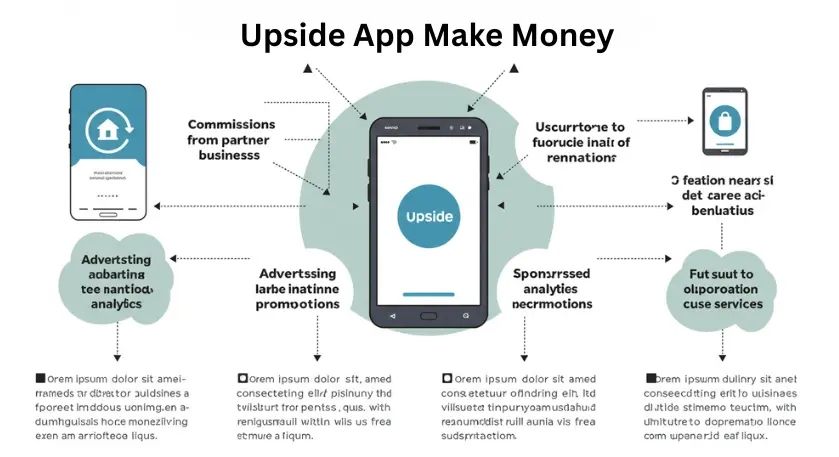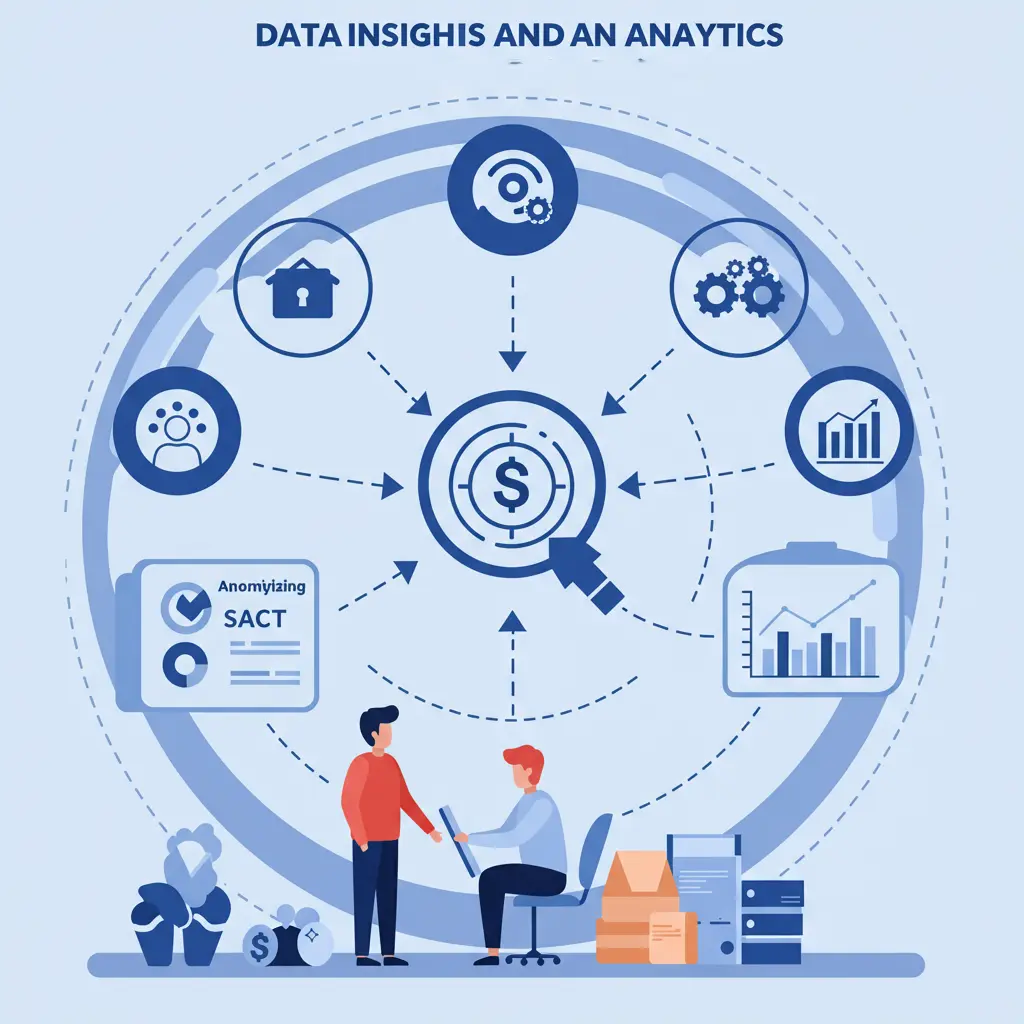The Upside app formerly known as Get Upside, has become well known as a cashback platform that gives users rewards for regular expenses like petrol, shopping and eating out.

The software functions on a brilliant and well structured business strategy, despite the fact that it may appear to be giving away free money. However, how precisely does the Upside app make money.
1. Commission from Partner Businesses
Commissions from affiliated companies are one of the main sources of income for the Upside app. These companies include supermarkets, restaurants and petrol stations that collaborate with Upside to draw in more clients. Upside gets paid for driving a transaction when a user uses the app to make a purchase at one of these partnered establishments.
Due to the based on performance nature of this arrangement, Upside is only paid by the company when a consumer completes a transaction. This makes it a low risk, high reward strategy for retailers who want to boost sales and foot traffic.
For example, the gas station pays Upside a small fee if you fuel up there after claiming a gas deal on Upside; a portion of that money is then passed on to you as cash back. Upside keeps the remainder of the commission as profit. The business acquires a paying customer, Upside makes money from facilitating the transaction and the user is rewarded for a purchase they were likely to make otherwise. In addition to generating a consistent flow of income for the app and encouraging repeat business, this incentive driven strategy offers genuine value to partners and customers.
How Does Upside App Make Money
2. Data Insights & Analytics

Data Insights & Analytics is a significant source of income for the Upside app. Upside gathers important transaction data, including purchase amount, location, time and frequency of purchases, each time a user makes a purchase using the app. Despite being fully anonymised to preserve user privacy, this data becomes immensely valuable when examined in large quantities.
Upside analyzes purchasing patterns and customer behavior using this aggregated data. Businesses can discover, for instance, what kinds of promotions are most effective, when consumers are most likely to shop, or how their prices stack up against those of their local rivals. These insights assist businesses in making more informed choices about marketing, pricing, inventory control and client loyalty plans.
These insights are provided to partner firms by Upside as part of its premium offerings. In order to launch targeted ads or receive comprehensive reports based on this data, merchants might have to pay more. They profit from increased sales and client retention, and Upside makes money off of its backend analytics.
In addition to fortifying Upside’s commercial ties, this data driven approach generates a steady stream of money over the long run. It’s a potent illustration of how data and technology can transform straightforward purchasing patterns into useful business knowledge.
3. Advertising & Promotions
Upside makes money through advertising and promotions, which gives companies the chance to become more visible within the app. In order to increase their chances of being noticed by customers looking for cashback offers, partner businesses can pay to have their locations, discounts or items displayed more prominently.
For example, a restaurant or gas station can sponsor a temporary cashback offer or pay to be seen at the top of the app’s search results. The fact that these sponsored ads have a direct impact on consumer purchasing decisions makes them extremely valuable. Users are more inclined to choose a location when they see a highlighted business or a better offer which increases traffic and sales for the advertiser.
Additionally, Upside might work with national brands to launch focused advertising campaigns. These promos might be made to encourage repeat business, draw in new clients or advertise a new product. While Upside makes money from advertising payments, businesses gain from quantifiable outcomes.
Users benefit from better discounts, businesses gain more visibility and Upside makes money by serving as a marketing conduit. It’s a contemporary, based on performance advertising approach that blends in nicely with the app’s intuitive reward scheme.
https://www.slashgear.com/1542399/how-upside-app-works
4. Subscription Services (Potential Future Revenue Stream)

Although partner commissions and data insights presently account for the majority of Upside’s revenue, subscription services could be a future source of income for the business. Adding a premium membership model could open up new revenue streams and improve user experience as the site expands and gains a devoted user base.
Users may be eligible for unique privileges like free of ads browsing, early access to special specials, greater cashback rates or priority customer support through a subscription service. For regular users who wish to optimize their convenience and savings, these features would be beneficial. A substantial amount of recurring revenue might be generated for Upside by even a tiny monthly fee from a big number of active users.
Upside might offer organizations a different membership tier with superior analytics or marketing tools. To launch custom campaigns, obtain priority placement in the app or access enhanced customer analytics, merchants could pay a set monthly price.
Many digital platforms have found success with subscription models because they generate steady income and promote sustained user involvement. Upside is well positioned to introduce such a service in the future because to its user base and infrastructure, even though it hasn’t done so yet. Subscriptions have the potential to be a solid revenue pillar for Upside if they are implemented correctly.
Conclusion:
Both users and partner businesses gain from the Upside app’s clever and long-term business model. Commissions from partner companies, where Upside is compensated for generating actual consumer traffic are its main source of revenue. Value is guaranteed for all stakeholders with this performance-based approach.
Additionally, Upside provides retailers with Data Insights & Analytics by utilizing its extensive database of user transactions. In addition to creating an additional revenue source for Upside, these anonymized insights assist companies in making well-informed decisions, refining marketing tactics and enhancing client retention.
Businesses can pay for more visibility and focused exposure within the app thanks to the platform’s advertising and promotions revenue. While Upside makes money off of the promotional space, businesses benefit from sponsored listings and special offers.
Finally, even if they haven’t been used before, subscription services show promise as a source of income in the future. Advanced tools for businesses and premium services for individuals could improve user experience overall and generate recurring revenue.
Q: Do businesses only pay if someone actually buys?
A. Yes, the model is performance based partners only pay when a purchase is completed via Upside.
Q: How do businesses use this data?
A. They use it for understanding customer behavior, improving offers, optimizing inventory, and creating better marketing strategies.
Q: Do these promotions guarantee sales?
A. While not guaranteed, targeted promotions usually lead to increased visibility and higher conversion rates.
Q: What would a user subscription include?
A. Possible features might include higher cashback rates, ad-free usage, early access to deals, or premium support.